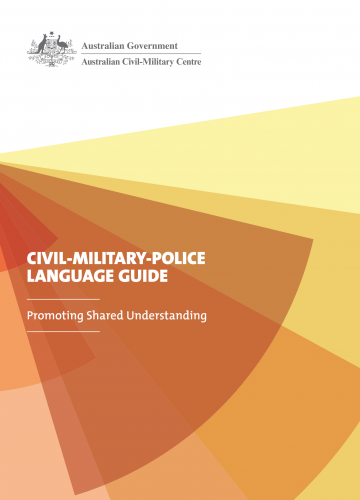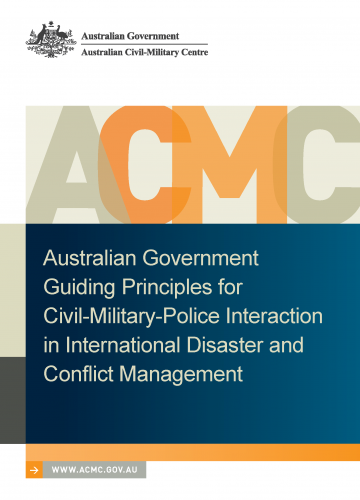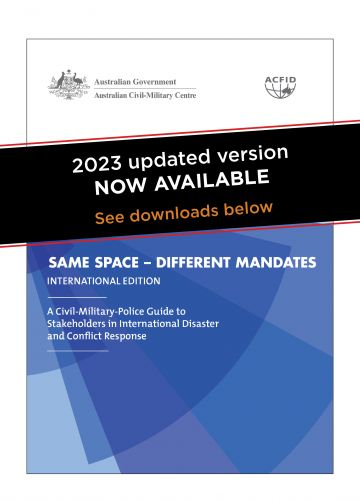The civil-military-police community is as diverse as it is broad. It contains a wide range of actors who employ a variety of methodologies and techniques, use unique equipment and often pursue different objectives in service of different masters. Diversity is a strength of the civil-militarypolice domain, although a common understanding is required between community members to realise that strength. The range of different terminology employed across the civil-military-police community can make it difficult to form a common understanding.
Strategic level decision making should be driven by shared information and understandings. A Civil-Military-Police Language Guide can help ensure that information sourced from the operational level is precise, consistent and unambiguous. The demand for these qualities increases during crises.
This Civil-Military-Police Language Guide is not intended to force participants to conform to any single set of terms; different sectors within the civil-military-police community may use different terminology. However, recognising and respecting the differences between actors is vital. The terminology employed by each actor can hold vastly different meanings, with implications for planning, preparedness and investment in activities such as training.
The terms included in the Language Guide are applicable to or commonly used in the civil-military-police field, and meet one of the following tests:
- Terms are subject to contested or inconsistent interpretation.
- Terms are used by a limited number of actors in the civil-military-police field, and thus are unfamiliar to some.
Many terms listed in the Language Guide include multiple definitions— beginning with that of the most likely ‘lead agency’ for that term. For instance, ‘humanitarian assistance’ first lists the definition according to the United Nations Office for the Coordination of Humanitarian Affairs.
The guide then provides definitions from other sources, such as academic, military or government.
Just as important as the term definitions is the ‘commentary’ alongside each term. This commentary provides context and demonstrates where there is potential for misunderstanding and any impacts on planning. The commentary will provide guidance on how the reader should discern between a choice of potential terms for use, and how the reader can distinguish an author’s intended meaning. This guidance is equally applicable to the ‘spoken word’.
This first edition of the Language Guide has been developed in collaboration with departments, agencies and the non-government sector, in Australia and overseas. It is intended for use across the civil-militarypolice community, and particularly for those who are new to the sector. The Language Guide will be most valuable when used in conjunction with the joint ACFID–ACMC publication, Same Space – Different Mandates, or the revised version, Same Space – Different Mandates International, which provides greater detail on the differences between actors in a conflict and disaster management setting.
Language is ever-evolving and this edition of the Language Guide should be viewed as a starting point. The dynamic nature of disaster and conflict management means that terminology will continue to transform. As our strategies, techniques and equipment for responding to such crises change, so must our vocabulary.




